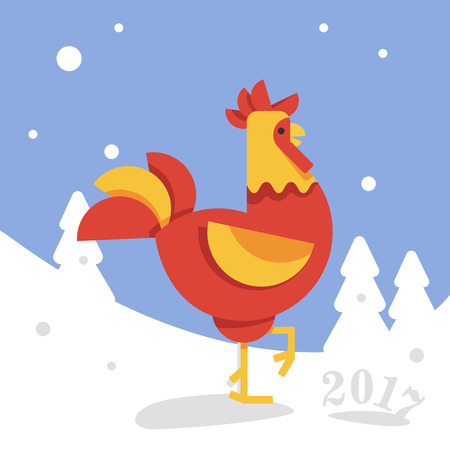Understanding Seasonal Cage Care
When it comes to taking care of pets and animals that live in cages, understanding the impact of seasonal changes is crucial for their health and comfort. Throughout the year, shifts in temperature, humidity, and daylight hours can significantly affect your pets well-being and the condition of their living environment. For example, a warm summer may cause cages to become overheated or overly humid, while winter could bring chilly drafts or dry air that impacts both comfort and respiratory health. Even subtle changes in the length of daylight can influence your pet’s behavior and activity levels. That’s why regular cage maintenance isn’t a one-size-fits-all task—it requires adjustments as the seasons change. By paying attention to these environmental factors, you can proactively adapt your cleaning routines, adjust bedding materials, and optimize ventilation or insulation. Doing so not only keeps your pet’s cage clean but also ensures a stable and safe habitat year-round.
Spring Refresh: Cleaning and Prepping
As the chill of winter fades, spring is the perfect time to give your pet’s cage a thorough refresh. Months of closed windows and limited airflow can leave habitats feeling stuffy, so a deep clean isn’t just about appearances—it’s vital for your animal’s health. Start by removing all bedding, toys, and accessories. Wash every surface with a pet-safe cleaner, paying close attention to corners and crevices where grime or mold may have built up during the colder months.
Next, inspect the structure itself. Even the best cages can show signs of wear after winter—look for rust on metal bars, cracks in plastic components, or loose fittings. Address any damage right away; small issues can quickly become safety hazards as your pet becomes more active with rising temperatures. Use the table below as a quick reference for what to check and how often:
| Component | What to Look For | Recommended Action |
|---|---|---|
| Metal Bars | Rust, bent sections | Remove rust, replace if damaged |
| Plastic Parts | Cracks, brittleness | Replace cracked areas |
| Latches/Locks | Loose or misaligned pieces | Tighten or realign as needed |
| Bedding Area | Mold, lingering odors | Deep clean or replace bedding material |
With winter behind you, it’s also time to swap out heavy bedding for lighter options that breathe better in mild weather. Choose materials appropriate for the season—think recycled paper or aspen shavings for small animals, or fresh hay for rabbits and guinea pigs. Rotate enrichment items too: add new chew toys or climbing structures that encourage natural behaviors now that your pet is likely spending more time awake and exploring. This proactive seasonal reset not only ensures comfort but also helps prevent health issues as temperatures rise.

3. Summer Heat Precautions
When temperatures soar, your pet’s cage can quickly become a hotspot—literally. Managing summer heat is crucial for keeping your animals comfortable and healthy. Here are some essential tips to help you stay ahead of the curve.
Monitor High Temperatures
Regularly check both indoor and outdoor cage locations with a reliable thermometer. Aim to keep the environment below 80°F (27°C) whenever possible, as most small animals and birds are sensitive to heat stress. If you notice the temperature rising, consider relocating cages away from direct sunlight or using curtains to block out harsh rays.
Ensure Proper Ventilation
Good airflow is key during summer months. Avoid placing cages in stuffy corners or near heat sources like appliances or windows. Use fans (set on low and never pointed directly at pets) to circulate air, but be mindful of drafts. Mesh cage covers can help increase ventilation without compromising safety.
Prevent Overheating
Watch for signs of heat exhaustion such as heavy panting, lethargy, drooling, or uncharacteristic behavior. Provide shaded areas within the cage using lightweight cloths or purpose-made covers. For some pets, offering ceramic tiles or frozen water bottles wrapped in towels inside the enclosure gives them a cool spot to relax.
Adjust Hydration Routines
Hydration needs spike in hot weather. Check water bottles and bowls multiple times a day, refilling with fresh, cool water as needed. Consider adding an extra water source during peak summer months. For animals that enjoy fruits or vegetables, offer hydrating treats like cucumber slices or watermelon chunks (always research safe options for your specific pet).
By staying vigilant with these precautions, you’ll help your pets ride out the summer safely—and comfortably—no matter how high the mercury climbs.
4. Fall Adjustments: Prepping for Cooler Weather
As autumn arrives, it’s time to make sure your animal cages are ready for dropping temperatures and shifting weather patterns. Proactive fall maintenance not only keeps your pets comfortable but also prevents bigger issues once winter hits. Here’s a practical guide to transitioning from summer routines to fall essentials.
Inspecting Insulation
Start by thoroughly checking all insulation within and around the cage. Look for any thinning, moisture damage, or displacement that could affect temperature regulation. For wooden or plastic cages, verify that any insulating materials like foam or padding are intact and dry.
Insulation Checklist
| Area | What to Inspect | Recommended Action |
|---|---|---|
| Walls & Roof | Gaps, damaged insulation | Repair or replace as needed |
| Floor | Dampness, missing padding | Add waterproof liner or new bedding |
| Doors & Vents | Poor seals, drafts | Add weatherstripping or draft blockers |
Sealing Cracks and Gaps
With the shift from hot summer air to cool fall breezes, small cracks can quickly become a source of heat loss. Inspect every seam, joint, and opening for potential leaks. Use pet-safe caulking or weatherproof tape to seal up problem areas—especially around windows, doors, and ventilation points.
Updating Heating Tools
This is the season to bring out reliable heating tools such as ceramic heat emitters, heating pads with thermostats, or safe space heaters designed for animal enclosures. Test all devices before steady use and check cords for fraying or wear. Make sure heat sources are placed where they won’t be chewed on or knocked over by active pets.
Heating Tool Update Table
| Device | Status Check | Action Required |
|---|---|---|
| Ceramic Heat Emitter | Test function; inspect wiring | Replace bulbs or cords if faulty |
| Heating Pad | Check for hot spots; test controls | Replace if uneven heating occurs |
| Space Heater (Pet-Safe) | Ensure stability; clean filters/vents | Tighten placement; clean thoroughly |
Transitioning Supplies from Summer to Fall
Packing away summer supplies and prepping your fall arsenal makes seasonal care seamless. Store away fans, cooling mats, and mesh covers. Bring in extra bedding like fleece blankets or straw (for appropriate species), switch to insulated water bottles or heated bowls if necessary, and keep emergency supplies handy in case of sudden cold snaps.
Quick Transition Tips:
- Launder all summer fabrics before storage to prevent mold/mildew.
- Create a checklist of fall-specific items needed for your animals’ comfort.
- Schedule weekly checks throughout the season as temperatures fluctuate.
Ahead-of-the-curve preparation ensures your pets stay cozy, healthy, and stress-free as the leaves begin to change and the chill sets in.
5. Winterization Strategies
Keeping Cages Warm During Cold Months
When winter arrives, maintaining a safe and comfortable environment for your pets becomes crucial. Start by relocating cages away from windows, doors, or any area prone to drafts. If possible, position the cage in a room with consistent heating, but avoid placing it directly next to radiators or vents where temperature fluctuations could occur.
Best Practices for Draft Protection
Drafts can be sneaky during American winters, especially in older homes. Use draft stoppers at the base of doors and seal window gaps with weatherstripping. For extra insulation, drape a breathable cover over part of the cage—just be sure it doesn’t restrict airflow entirely or pose any fire hazard.
Safe Heat Sources for Pets
While you might be tempted to use space heaters or heated pads, always prioritize pet-safe options. Choose heating pads designed specifically for animals and ensure they have automatic shut-off features. Never use electric blankets intended for humans or place hot water bottles inside cages, as these can cause burns or leaks.
Monitoring Moisture and Frost Build-Up
Cold temperatures often bring increased condensation and humidity changes. Check cage surfaces daily for moisture build-up or frost—these can lead to respiratory issues and mold growth. Replace damp bedding immediately and use absorbent materials that wick away moisture without getting soggy. Consider using a small, battery-operated hygrometer to monitor humidity levels inside the cage for extra peace of mind.
By following these winterization strategies, you’ll help ensure your pets stay warm, dry, and healthy all season long—no matter how harsh the American winter gets outside.
6. Routine Checks and Emergency Readiness
Staying proactive is the cornerstone of effective seasonal cage maintenance. Establishing a regular inspection schedule helps you spot wear and tear, loose fastenings, or compromised weatherproofing before these issues become real threats to your animals’ safety. Consider setting up a maintenance calendar—whether it’s a digital reminder or an old-school wall chart—to track when cages were last checked, cleaned, and reinforced. Make it a habit to inspect after every major weather event, such as heavy rain, snowstorms, or heatwaves, even if you’ve recently performed routine checks.
Beyond regular upkeep, emergency readiness is essential for dealing with unpredictable weather. Prepare an emergency kit that’s easily accessible and tailored to your region’s most common weather hazards—think tarps for sudden downpours, extra bedding for cold snaps, sandbags for flooding, and battery-powered fans in case of heat waves or power outages. Have a clear plan for relocating animals if conditions deteriorate rapidly. Practice drills with your team or family so everyone knows their role during a crisis; in stressful moments, muscle memory can make all the difference.
Remember: being prepared isn’t just about reacting—it’s about building resilience into your animal care routines all year long. By making maintenance checks part of your regular schedule and having contingency plans in place, you’ll not only extend the life of your enclosures but also give yourself peace of mind knowing your animals are safe, no matter what Mother Nature throws your way.


